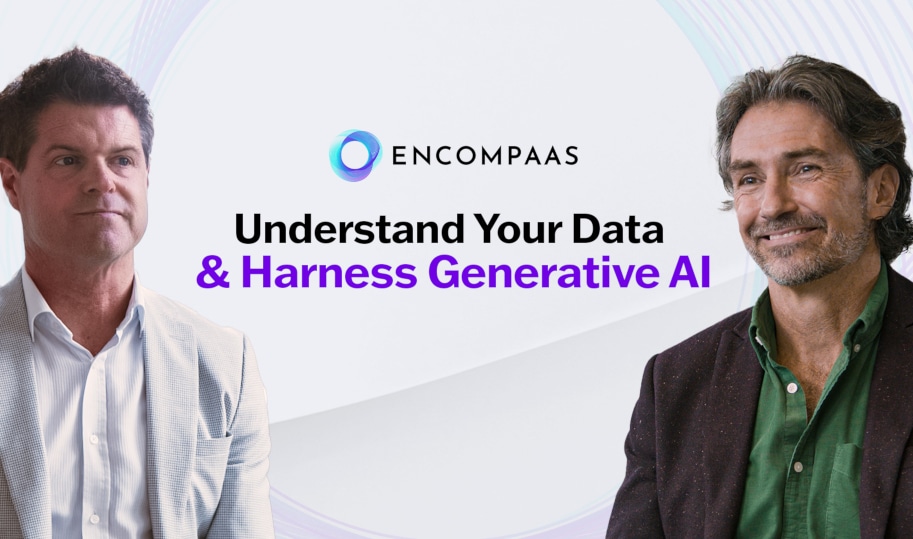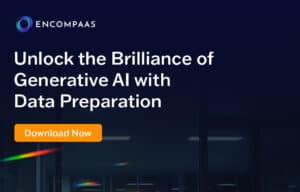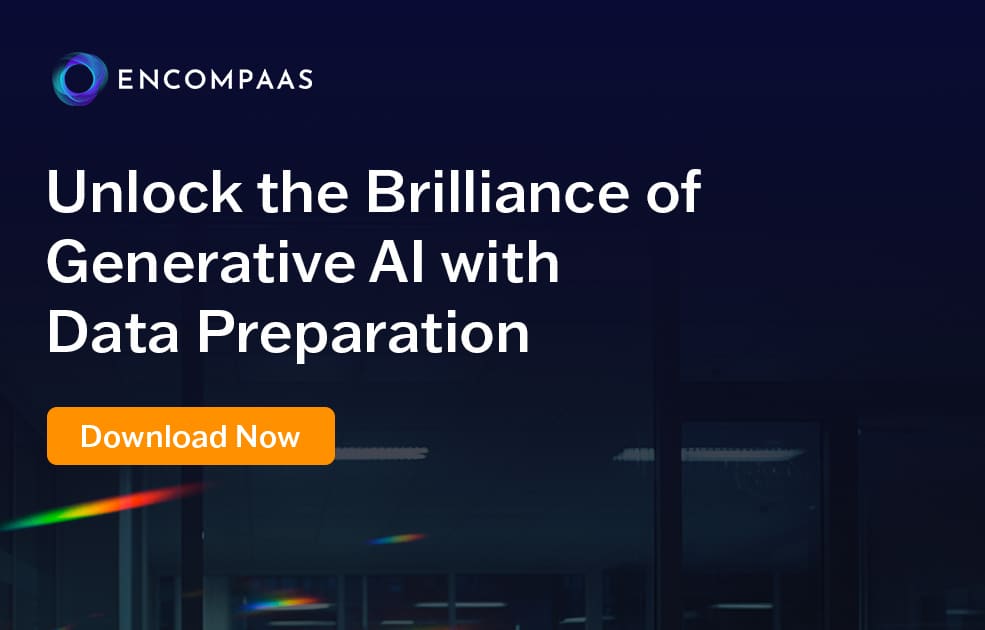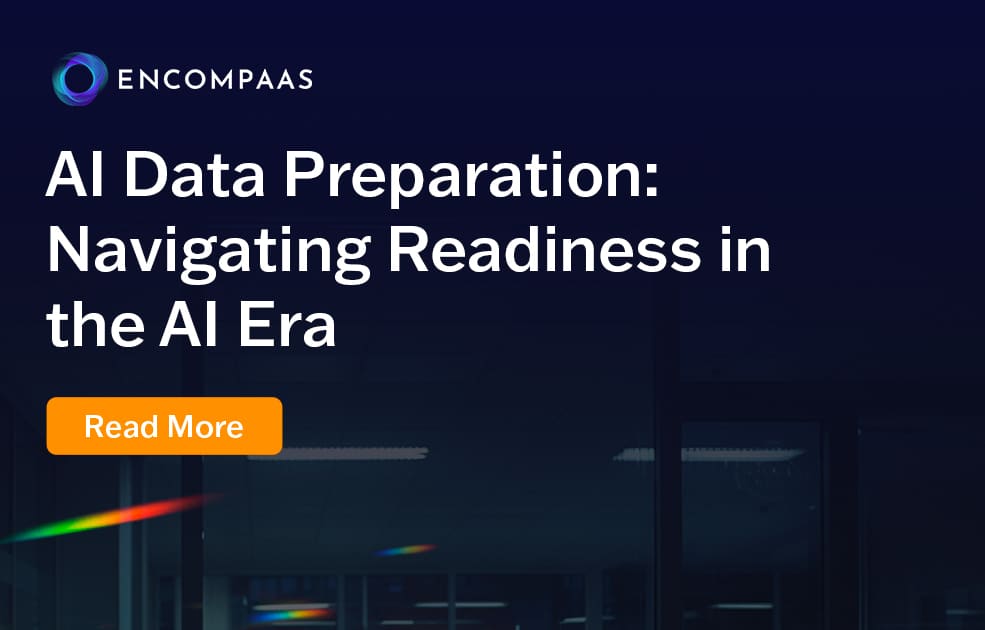What is data discovery? Definition, importance & process
Authored by EncompaaS - Sep 18, 2023

In today’s data-driven world, harnessing the full potential of the vast amounts of data available to organizations is crucial. Data discovery is a pivotal process that enables businesses to sift through and make sense of their data, transforming it into actionable insights.
It involves a comprehensive approach, starting from meticulous data preparation to advanced analysis and integration into business operations.
This article is all about understanding what data discovery is, why it’s important, and how it works.
Main takeaways from this article:
- Automated data discovery tools give companies a strategic advantage by unearthing hidden patterns and relationships in their data troves. The data discovered then fuels informed decision-making and operational efficiency.
- Data Discovery helps with meticulous data preparation, exploration using advanced statistical tools, interactive visual analyses to identify trends, and insights integration into aspects of business operations.
- Effective Data Discovery processes bolster compliance efforts, providing crucial support in meeting regulatory standards and ensuring robust data governance strategies.
- The cutting-edge tool, EncompaaS, has revolutionized the Data Discovery landscape with its AI-driven analytics, seamless data integration, and advanced visualization capabilities.
- EncompaaS offers a myriad of benefits – elevating the value and insight derived from data, speeding up decision-making processes, and ensuring regulatory compliance.
What is data discovery?
Data discovery involves identifying and accessing different data sources within a company to understand the information they contain. By digging through data, business users uncover valuable insights, patterns, and trends.
Why data discovery matters
Think about trying to find a hidden treasure in a dark room with only a small flashlight. That’s what it’s like for businesses working without data discovery – they only see a small piece of the picture. To fully realize the value of their data – their treasure, they need a full, clear view.
That’s the significance of data discovery, and we’ll explore various data discovery use cases.
- Governance and compliance: With privacy legislation becoming more stringent, data discovery plays an integral role in ensuring data governance and adherence to global regulatory standards. Through data discovery, organizations can identify and shield sensitive information to prevent data security breaches and penalties.
- Strategic decision-making: The process of exploring and understanding data enables businesses to make informed decisions. It offers insights that reveal trends, patterns, and relationships integral to setting strategies, predicting future trends, and mitigating potential risks.
- Business intelligence: Data discovery transforms raw data into an intelligence asset. By revealing hidden patterns and insights, it empowers businesses with knowledge that drives competitive advantage and promotes innovation.
- Operational efficiency: Data discovery allows organizations to streamline their operations by replacing manual data discovery with automated processes. By spotting trends and patterns in operational data, companies can optimize resource allocation, enhance productivity, and reduce costs.
- Perspective and context: While data mining and data analysis focus predominantly on extracting useful information from data, data discovery brings more depth and context into the analysis. It not only uncovers hidden patterns and insights but also illustrates their applicability and relevance to the business.
Understanding the data discovery process (step-by-step)
Let’s delve into how data discovery actually works. We’ll go step-by-step through the process, breaking down each stage into manageable bites to ensure it’s easy to grasp, even if you’re completely new to the field of data discovery.
1. Data preparation
Data preparation is an essential step in the data discovery process. It involves cleaning, integrating, and structuring raw data and preparing it for analysis.
Let’s dive into the data preparation phase.
The cleansing phase
Data is messy. It’s filled with errors, duplicates, and inconsistencies and is almost always incomplete. To get the high-quality insights you need, you must first sift through this chaos and bring some kind of order. This means removing all those troublesome duplicates, fixing errors, and filling in the gaps.
The integration stage
Once you’ve cleaned your data, it’s time to bring everything together. If you think of your data as a jigsaw puzzle, this would be the point where you start putting the pieces together. The integration stage involves amalgamating data from diverse sources and formatting it into a single, unified view. It’s essentially about making sure everything works together seamlessly.
Structuring for analysis
Your data has been cleaned and integrated, but that doesn’t mean it’s ready to deliver those game-changing insights just yet. The final piece of the puzzle involves organizing your data in such a way that’s most conducive to analysis. This could mean anything from data classification based on certain attributes to creating user-friendly layouts for easier navigation.
By the end of the data preparation process, you’re left with a clean, integrated, and correctly structured dataset. This data is primed and ready to deliver impactful insights that can steer your decision-making process in the right direction.
2. Data exploration
The data exploration step in the data discovery process is where you get your hands messy with your data to gain a better understanding of the patterns, trends, and outliers. You’re now ready to embrace some intuitive exploring and grapple directly with your data, armed with statistical methods and visualization tools.
Let’s unfold that magic!
Digging with statistical methods
The initial probing of your dataset involves computing descriptive statistics like mean, median, mode, or standard deviation to get an elementary understanding of your data across numeric fields. Next, you might use correlation matrices to quantify how strongly different variables in your data relate to each other. These methods illuminate a preliminary path to navigate through your data’s complex terrain.
Visualizing data’s story
Step aside, complex code, and hello, visual data discovery tools! Data visualization tools are the graphical counterpart to your statistical toolbox.
Segments of your data can be conveniently displayed with sleek bar plots, histograms, or even more complex scatter plots. These can help you quickly identify significant trends, compare categories, and notice any unusual observations (outliers) that may require further scrutiny.
Don’t underestimate the instant clarity a well-crafted visual can convey.
3. Visual analysis
Here’s where we arm ourselves with interactive visual tools to illuminate the ebbs, flows, patterns, and trends hidden in our data. But how’s that done? Let’s dive right in.
Decoding patterns with interactive visualizations
Imagine staring at a spreadsheet filled with rows and columns of raw data. Pretty daunting, right? Parsing such dense information can be complex and confusing, but it doesn’t have to be.
This is where interactive visualization tools take center stage. These smart data discovery tools transform your data into visually stimulating graphics that can unearth valuable insights about your business.
Bar charts, scatter plots, pie charts, heat maps, histograms–you name it. The goal is to spot patterns, correlations, and outliers that might otherwise go unnoticed.
Capitalizing on the power of trends
As patterns begin to emerge from your data, so do trends. And understanding trends is like having a crystal ball in your business strategy kit.
Interactive visualization tools not only highlight trends but also let you interact with them. This means you can zoom in, drill down, filter, or manipulate the data to capture the finest details. With such powerful capabilities, you’re no longer just observing the data—you’re exploring it, playing with it, and truly understanding it.
4. Interactive exploration
Imagine standing before a vast and complex canvas with a myriad of colors and textures. This, in a nutshell, is your data. In Interactive Exploration, you become a zealous art critic, mulling over each data point and every nuance, striving to understand what stories the data may unveil.
Diving deep with data filtering
Picture a sieve that filters out irrelevant information, leaving you with valuable, relevant data gems. Filtering allows you to drill down to the core essence of your data and sift out the unnecessary, focusing on the most pertinent aspects. For instance, filtering sales data by region can provide insight into market-specific trends.
The power of details
Setting the stage for drilling down— a process wherein you focus on a specific subset of your data. Think of it as zooming in on an intriguing part of a picture to examine it more closely. This granular view can reveal deeper, more detailed connections and trends that might not be apparent in a broad overview.
Examinations for insights
Finally, once you’ve filtered your data and dug into the nitty-gritty, it’s time for a detailed examination. Picture an archaeologist carefully brushing away the soil around an artifact, every careful stroke revealing more about the object’s history. Similarly, examining data details with care can reveal powerful insights that could revolutionize your organization’s decision-making process.
5. Insight generation
Generating insights is a pivotal point in the data discovery process where all the previous steps come to fruition. This stage turns the explored and analyzed data into meaningful information, offering valuable insights that can transform the way your business performs.
Identifying trends and transforming data into knowledge
Once you’ve interactively explored your datasets and visually analyzed them, you’ll start to see trends, patterns, and anomalies. At this stage, you may question why certain patterns exist, how different variables influence each other, or what causes certain disruptions in otherwise consistent data. This insightful analysis is where data transforms into knowledge.
Creating actionable insights
Knowledge, however, isn’t necessarily actionable. It becomes so when it gives a clear direction for decision-making or strategy altering. Recommendations based on ‘why’ a certain pattern emerges will drive your next steps and actions.
You might identify a previously unseen group of customers, discover patterns in usage that can inform product development, or reveal inefficiencies in operations that, once addressed, can save the company significant resources.
Framing the future with data-driven decisions
The generated insights will fuel data-driven decisions, anchoring ongoing strategies and future initiatives. A deep dive into the informative sea of data can yield pearls of wisdom, providing a well-defined direction for your business. Moreover, it helps maintain a competitive edge in an erudite business world that values intelligent insights.
Improved decision velocity
Lastly, having timely, well-founded, and actionable insights allows for rapid and confident decision-making. The velocity of decisions, a critical factor in today’s fast-paced business world, is significantly increased when insights are drawn correctly from the data discovery process.
6. Integration and sharing
The final stage in the data discovery process is perhaps the most important: using the insights you’ve uncovered meaningfully and sharing them with the people in your organization who can act on them.
It’s time to take your findings and bring them into your everyday business operations.
Weaving discoveries into the operational fabric
You have done all this work and accumulated these valuable insights; now what? The goal is far from merely accumulating knowledge. Instead, it’s about leveraging this knowledge to fortify your strategic decision-making process.
Can the trends you observed impact your product development? Should your marketing approach adjust based on the customer behaviors you’ve uncovered? These are the efficiency-enhancing questions you need to ask.
Sharing increases value
Never underestimate the impact of sharing these findings with your team. Spreading this knowledge can foster a data-supported culture within your organization. Decision-makers will be more informed, marketing strategists can improve the efficacy of their campaigns, and your employees will feel more engaged and invested in the company they are contributing to.
With data discovery, the potential for discovery is not only within the data itself but also within the ways that this data can enhance communication, collaboration, and strategic improvements across your organization.
So don’t lock these insights in a vault; share them and witness the collective growth.
EncompaaS’ DUGU framework
The DUGU framework by EncompaaS stands as a cornerstone in the evolution of data discovery methodologies, representing a systematic approach to managing the vast and complex data ecosystems of modern enterprises. DUGU, an acronym for Discover, Understand, Govern, and Use, outlines a comprehensive strategy for data management that aligns with the essential stages of the data discovery process.
Discover
The initial phase, Discover, emphasizes the automated detection of both structured and unstructured data across an organization’s repositories. This foundational step is critical as it enables the identification of data regardless of its location, ensuring no valuable information remains hidden. Discovery is the key that unlocks the door to the vast potential of enterprise data, laying the groundwork for the subsequent stages of the DUGU framework.
Understand
Once data is discovered, the next step is to Understand it. This involves analyzing the data to grasp its meaning, relevance, and context. Understanding data is crucial for deriving actionable insights and making informed decisions. It’s about transforming raw data into knowledge that can inform strategic directions and operational improvements.
Govern
Governance is the third pillar of the DUGU framework. This stage focuses on establishing and enforcing policies, procedures, and standards to manage data effectively and securely. Data governance is essential for ensuring data quality, compliance with regulations, and protecting sensitive information. It builds trust in the data and the insights derived from it, which is vital for any data-driven organization.
Use
The final stage, Use, is about leveraging the discovered, understood, and governed data to drive business value. This could involve integrating insights into decision-making processes, enhancing operational efficiencies, or creating new business opportunities. The Use phase is where the tangible benefits of the data discovery process are realized, translating data insights into actions that propel the organization forward.
The impact of EncompaaS’ DUGU framework
The EncompaaS DUGU framework revolutionizes data discovery by providing a structured and efficient approach to managing data. By facilitating automated discovery, fostering a deep understanding of data, ensuring robust governance, and enabling effective use of data, EncompaaS empowers organizations to navigate the complexities of the data landscape with confidence.
Organizations equipped with EncompaaS and its DUGU framework can expect to see an elevation in the value and insight derived from their data, accelerated decision-making processes, and a strong adherence to regulatory compliance. This comprehensive approach not only enhances operational efficiency but also fosters a culture of innovation and informed strategy within the enterprise.
In essence, the DUGU framework by EncompaaS is a blueprint for transforming data into a strategic asset, ensuring that organizations can harness the full potential of their data to drive success in today’s competitive and data-driven world.
Data discovery with EncompaaS
In a world where businesses swim in oceans of data, the ability to navigate those waters effectively is crucial to success. Data discovery offers the life raft – it’s the process of uncovering the hidden patterns, trends, and insights that shape your business landscape.
This is where EncompaaS enters the picture. EncompaaS is revolutionizing data discovery by addressing age-old challenges that have plagued traditional data discovery processes. Through efficiency and accuracy, it’s like switching from a rowboat to a powerful speedboat.
What sets EncompaaS apart:
- AI-driven analytics: EncompaaS takes the guesswork out of your data with intelligent analytics. Let AI do the heavy lifting and uncover insights you may have missed.
- Seamless data integration: Break down those data silos! EncompaaS centralizes disparate data sources giving you that crucial 360-degree view.
- Advanced visualization capabilities: Turn your data into a compelling story. Visualizations in EncompaaS unlock a new level of clarity and understanding.
The rewards of EncompaaS’s approach to data discovery are tangible:
- Deeper insights: Go beyond surface-level data and uncover knowledge that has true transformative power for your business.
- Faster decision-making: Cut through the data fog and make those crucial business decisions with confidence, backed by insightful analysis.
- Compliance confidence: EncompaaS aids in meeting complex regulatory requirements, ensuring your data management practices are robust and reliable.
If you’re ready to turn your data into fuel for innovation and decision-making, EncompaaS is your answer. Explore EncompaaS further to see how it can transform your data discovery journey. Book a demo today!
Book a demo
Let's get started
Experience the Power of EncompaaS!
Submit this form to see EncompaaS in action with a demo from our information management experts.
Request a demo today
Related Resources

- video
Understand Your Data & Harness Generative AI
Jesse Todd (CEO, EncompaaS) and Jaimie Tilbrook (CPO, EncompaaS) delve into the critical challenges companies face in managing their vast data landscapes, emphasizing the importance of understanding what data is, where it is located, its context, and its value.
Learn More




